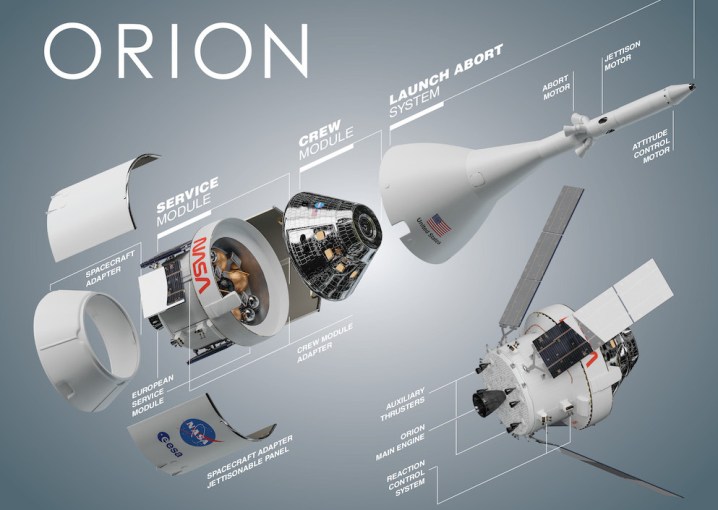NASA is about to perform the maiden launch of its next-generation Space Launch System (SLS) rocket, the most powerful launch vehicle it’s ever built.

Next week’s Artemis I mission marks the start of an exciting new era of space exploration that will pave the way for a crewed lunar landing — the first since 1972 — in just a few years from now.
Making astronaut missions possible to the moon, Mars, and beyond is the Orion spacecraft, a vehicle that on its maiden flight next week will perform a crewless flyby of the moon before returning to Earth in a demanding six-week test voyage.
Orion’s Crew Module was built by Lockheed Martin, while the European Service Module — vital for the supply of electricity, propulsion, thermal control, air, and water — is the work of Airbus Defence and Space, a unit of the aviation giant.
The video below offers a detailed look at the new Orion spacecraft, the first to be especially designed for crewed missions to deep space.
As the video shows, Orion’s Crew Module can carry up to four astronauts, while the spaceship’s main engine is capable of 6,000 pounds of thrust, with eight auxiliary engines each offering up to 110 pounds of thrust.
Orion also features four seven-meter-long solar wings, with 3,750 solar cells per wing drawing energy from the sun.
The video also highlights Orion’s launch abort system, a mechanism designed to activate within milliseconds of a serious anomaly at launch. If needed, the system will rapidly propel the crew capsule away from a potentially out-of-control rocket to safety via a parachute-assisted landing.
“This new spacecraft will take us farther than we’ve gone before, including to the vicinity of the moon and Mars,” NASA says on its website. “Named after one of the largest constellations in the night sky and drawing from more than 50 years of spaceflight research and development, the Orion spacecraft is designed to meet the evolving needs of our nation’s deep space exploration program for decades to come.”
With 8.8 million pounds of thrust — the most ever seen with a rocket launch — next week’s SLS lift-off promises to be an extraordinary spectacle. Here’s how to watch a livestream of the event.


